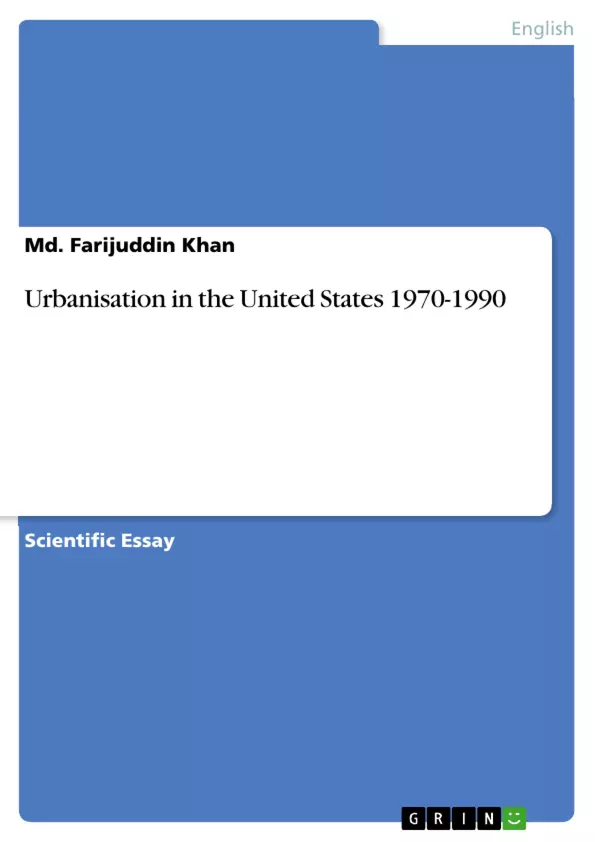After the end of the Second World War, the United States took a giant step towards social and economic upliftment of all its citizens with special emphasis given on social welfare programs especially for minorities. The victory in the great war motivated the US to amend historical wrongdoings against particular sections of its own citizens, who were deprived of their legitimate rights and privileges based on their skin color and ethnicity, through effective policy interventions. There came many path-breaking legal Acts such as Civil Rights Act, Housing Act, G.I. Bill, etc. which were intended to put every citizen of the country on equal footing, thereby strengthening the American Creed. These initiatives coincided with the period of baby-boom and mass urbanisation in many parts of the US. The period also saw America becoming wealthier and more powerful than before. However, racism against the African-Americans and other minorities and the resultant race riots continued to thrive on along with all these developments in the decades following the war. A new urban revival was beginning to take shape by 1970s which was different from the previous urbanisation process in the US. Unlike the previous, the 1970s urbanisation had the characteristics of counter-urbanisation, massive shift in demography, environmental movements, etc.
The paper is a modest attempt to highlight and analyze the following sub-headings:
I.) the economic and social crises confronting America in 1970s and 1980s.
II.) the urban growth pattern (counter-urbanisation) and changing demography across the State
during the period particularly in the developed and industrialised regions of Northeast & Midwest
United States and Sunbelt regions of Southern and South-West United States.
III.) theoretical explanations for the new urban revival (1970-90).
IV.) socio-economic and environmental costs of urbanisation.
Inhaltsverzeichnis (Table of Contents)
- Introduction
- Urbanisation
- Research Questions
- Research Methods
- Brief Historical Background (Early America)
- Urban America-I (1900-1970): Suburbanisation
- Post World War II
- Move to Suburbania: A new level of urbanisation
- Urban America -II (1970-1990): New Urban Revival
- Economic crisis of the 1970s
- Social and Consumer Movements
- Dimensions of the New Urban Revival
- Counter-Urbanisation
- Urban and Suburban Growth
- Demographic Change
- Rural-Urban Disparity
- Explanations of Urbanisation (1970-90)
- Post-counter urbanization: 1980s Re-urbanisation and Viscious Circle of Urban America
- Demographic Change (1980-90)
- Socio-economic Costs of the Urbanisation of 1970s and 1980s: A Brief Analysis
- Conclusion
Zielsetzung und Themenschwerpunkte (Objectives and Key Themes)
This paper analyzes the urbanisation process in the United States between 1970 and 1990, focusing on the economic and social crises of the 1970s and 1980s, the shifting urban growth patterns, and the theoretical explanations for the new urban revival of the period.
- The economic and social crises confronting the United States in the 1970s and 1980s.
- The urban growth pattern (counter-urbanisation) and changing demography across the United States during this period, particularly in the Northeast & Midwest and the Sunbelt regions.
- Theoretical explanations for the new urban revival (1970-90).
- Socio-economic and environmental costs of urbanisation.
- The future trend of the new urban revival.
Zusammenfassung der Kapitel (Chapter Summaries)
The paper begins by discussing the historical background of urban America, highlighting the post-World War II suburbanisation boom fueled by government policies and the rise of the American Dream. It then examines the economic crisis of the 1970s, which marked a shift in economic models and contributed to the rise of environmental and consumer movements.
The chapter on the "New Urban Revival" explores the phenomenon of counter-urbanisation, where people moved from major urban areas to more rural settlements. It analyzes the demographic shifts, including the migration from the Rust Belt to the Sunbelt, and presents different theoretical explanations for these changes, including period, regional restructuring, and deconcentration explanations.
The paper continues by examining the re-urbanisation trends of the 1980s and analyzes the socio-economic costs of urbanisation, including the impact on the economy and the environment.
Schlüsselwörter (Keywords)
The paper explores the urbanisation process in the United States from 1970 to 1990, focusing on key concepts such as counter-urbanisation, suburbanisation, de-industrialisation, regional restructuring, deconcentration, the Rust Belt, the Sunbelt, the American Dream, and the socio-economic and environmental costs of urbanisation.
- Quote paper
- Md. Farijuddin Khan (Author), 2012, Urbanisation in the United States 1970-1990, Munich, GRIN Verlag, https://www.grin.com/document/284153



